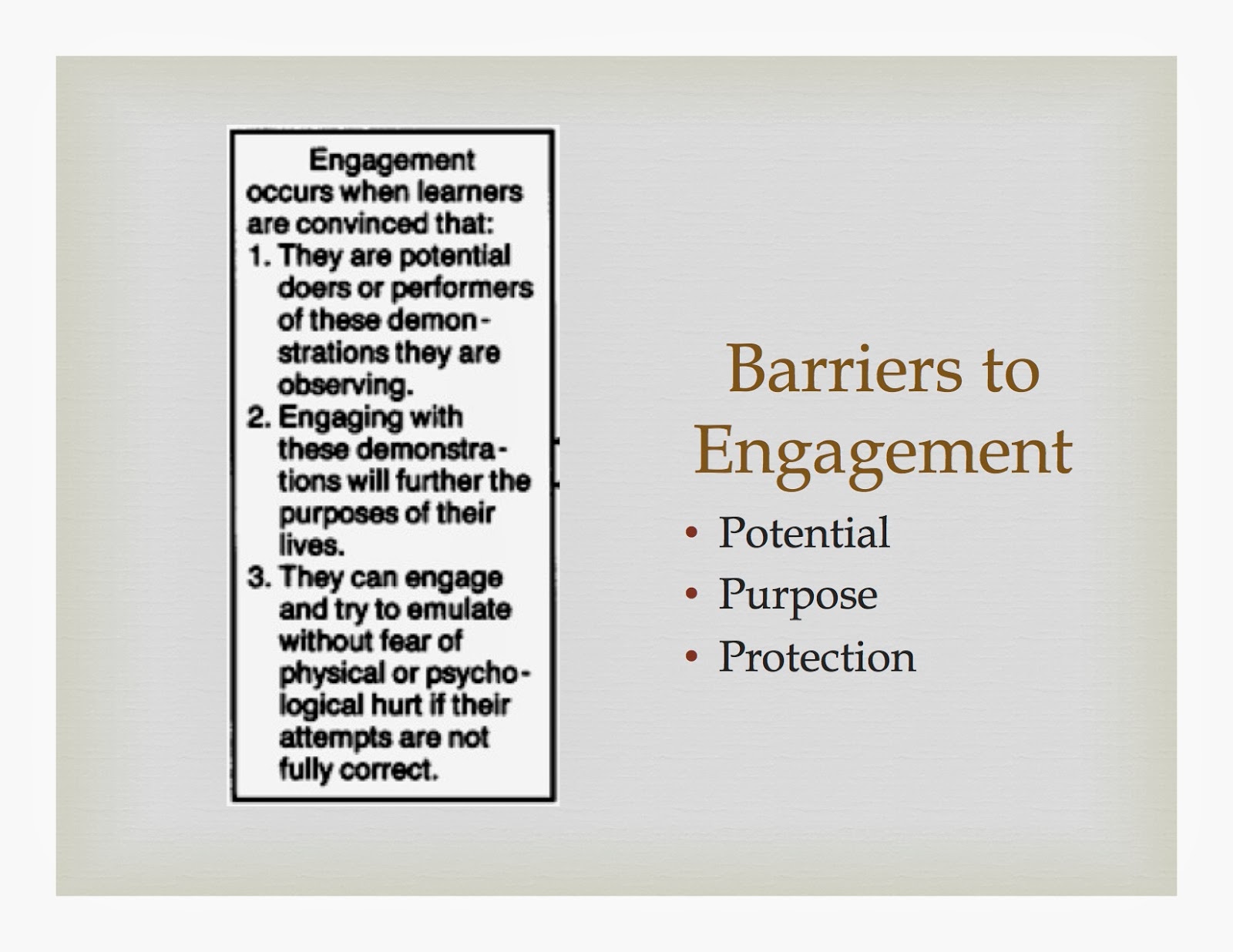The following is an approximation of the conversation I am leading at NovaNow on February 8th.
Engaging Learning
Description: Because engagement is an essential element to learning, this conversation will focus on three key questions:
- What does engagement look like in our classes?
- How do we support learners in engaging with our discipline?
- Are there ways we interfere with learners' ability to engage?
==========
What does engagement look like in our classes?
Please take a moment to consider the following questions. In order to facilitate our discussion, it might help to write down (Tweet using #NNGREL) your answers. I will be collecting Tweets using this hashtag.
Conversations
But identifying another person's level of engagement isn't always easy.
Consequently, I often ask my students to consider for themselves what it looks like to be engaged in learning (I write about it here). What does it look like when you are engaged? (Think/Write/Tweet)
Conversations
Unfortunately, they often confuse engagement with compliance. In order to support a different vision of engagement, I share with them the work of Morgan and Saxton (2006).
Attaining the internalizing level is necessary for long-tern understanding. So I have student read about the Taxonomy of Personal Engagement and develop their own rubric for monitoring their engagement. Three times during the semester, students submit annotated artifacts that demonstrate their ability to engage at the higher level.
Conversations
Conversations
Unfortunately, they often confuse engagement with compliance. In order to support a different vision of engagement, I share with them the work of Morgan and Saxton (2006).
 |
| Taxonomy of Personal Engagement (p. 28) |
Conversations
How do we support learners in engaging with our discipline?
Cambourne's research on language acquisition found that engagement is fundamental to learning and that there are conditions that support engagement.
Where are these happening in your classroom?
Conversations
The conditions on the left typically reside with the learner, while those on the right begin with the teacher. Cambourne suggests that as the year progresses learners start to take on providing demonstrations, giving peer-feedback, and set personal expectations. Thus, their engagement resources continues to grow.
Are there ways we interfere with learners' ability to engage?
While written in the positive, Cambourne identifies issues that can interfere with engagement.
Conversations
My wife, Kathy, wrote a post on possible barriers and might also be a part of our conversation.




No comments:
Post a Comment